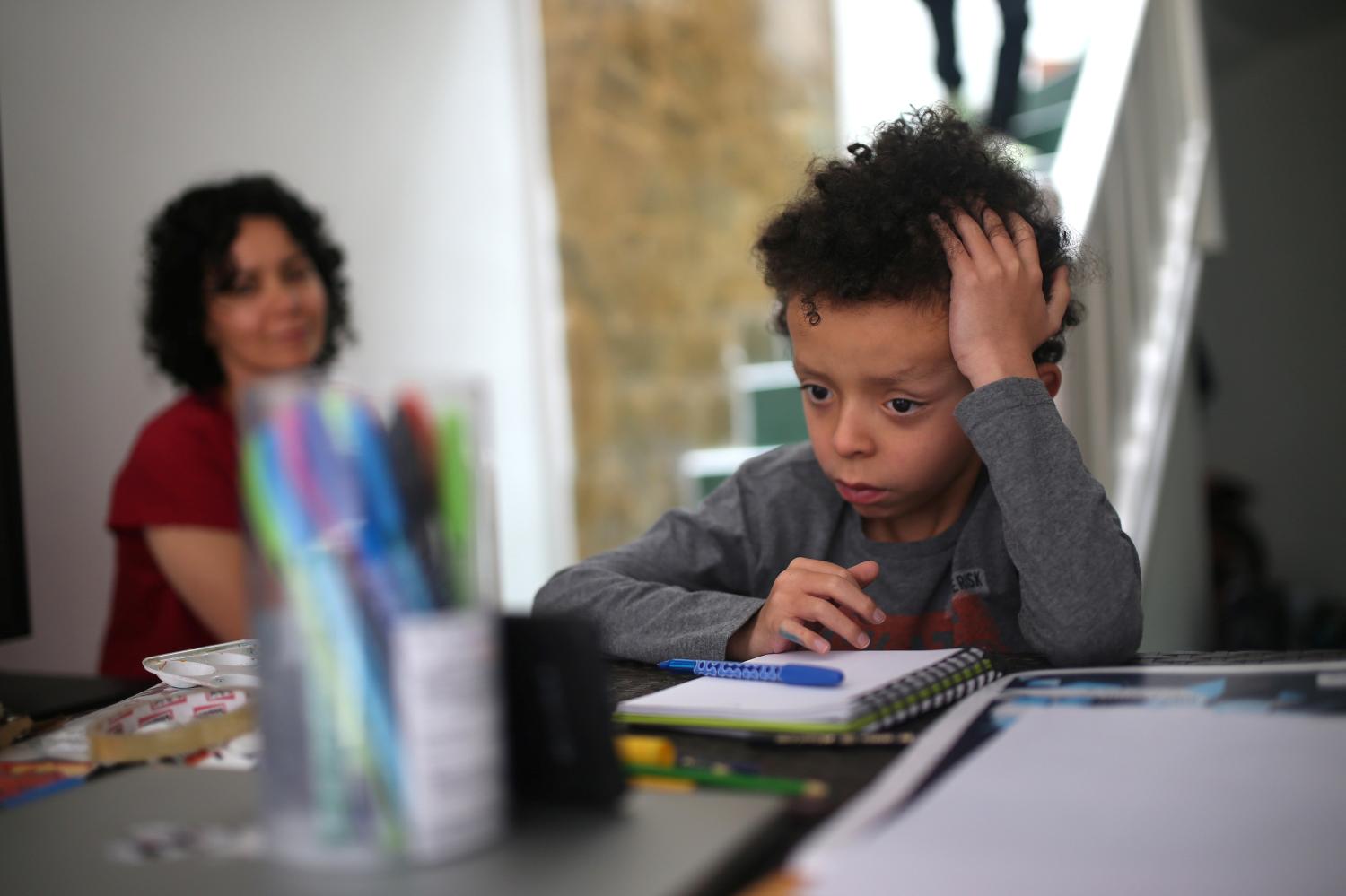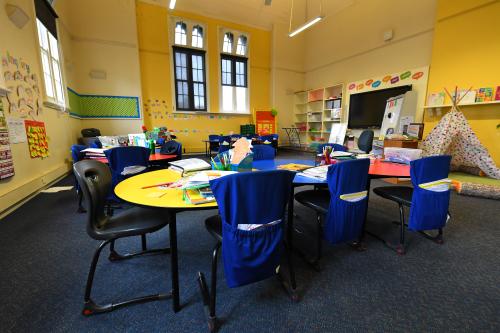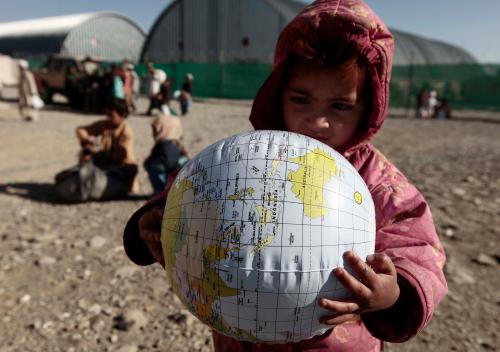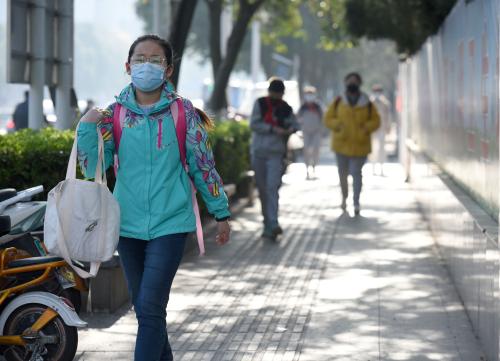According to UNESCO, as of April 14, 188 countries around the world have closed schools nationwide, affecting over 1.5 billion learners and representing more than 91 percent of total enrolled learners. The world has never experienced such a dramatic impact on human capital investment, and the consequences of COVID-19 on economic, social, and political indicators are unknown but certainly will be dramatic.
Although a majority of governments are making substantial efforts to ensure continuing education opportunities, their capacity for quality learning—especially for the most disadvantaged populations—varies enormously. In this brief, I use data recently collected by the Center for Global Development and combine it with the World Bank’s classification method for countries’ income levels and regions of the world to take stock of the official education system responses to COVID-19 around the world and to analyze how these responses may affect gaps in student learning across regions, countries of various income levels, and countries with different student performance levels as measured by international assessments.
Variability in remote learning by country, region, and education resource
Figure 1 summarizes how governments in countries of different income levels are using remote learning to continue basic education (K-12) in light of school closures. The responses vary widely by level of income: Less than 25 percent of low-income countries currently provide any type of remote learning, and of these, the majority are using TV and radio. In contrast, close to 90 percent of high-income countries are providing remote learning opportunities, nearly all of which are provided online. Twenty percent of high-income countries are using a combination of online and broadcast education. Among upper-middle income countries, more than 70 percent offer remote learning opportunities, using a combination of online and broadcast. A lower share of lower-middle income countries—66 percent—offer online and/or broadcast remote learning opportunities to their students.
But even when governments of low- and middle-income countries are trying to offer online education materials, they will not reach most students. Only 36 percent of residents of lower-middle income countries, for example, have access to the internet, a statistic that cannot easily be improved during the pandemic.

Countries’ responses to school closures also vary by region (see Figure 2).[1] In East Asia and the Pacific, Europe and Central Asia, and Latin America and the Caribbean (LAC), a majority of countries that are providing remote learning rely on online education exclusively, but a sizable share also combine online education with TV and radio to reach rural areas and those without internet access. In the Middle East and North Africa (MENA), 28 percent of countries rely on TV and radio only, slightly under 40 percent offer only online education, and 22 percent are using a combination of online and broadcast options. In South Asia, close to 40 percent of countries use broadcast (radio or TV and radio), and close to 50 percent are using a combination of online and broadcast learning opportunities. In sub-Saharan Africa, only 11 percent of countries rely exclusively on online opportunities, and only 23 percent use a combination of online and broadcast.
 Among countries using online education resources, close to 60 percent use online platforms, and close to 35 percent distribute educational videos online. A small proportion of countries employ video games as an educational resource (see Figure 3). About 30 percent of countries suggest online educational resources to households through social media and ministry of education websites. Twelve percent publish instructional modules that contain reading materials and lessons that focus on specific topics, usually targeted toward individual grade levels.
Among countries using online education resources, close to 60 percent use online platforms, and close to 35 percent distribute educational videos online. A small proportion of countries employ video games as an educational resource (see Figure 3). About 30 percent of countries suggest online educational resources to households through social media and ministry of education websites. Twelve percent publish instructional modules that contain reading materials and lessons that focus on specific topics, usually targeted toward individual grade levels.

Variability in government support for teachers during remote learning
Teachers are at the heart of education. Research has compellingly shown that teachers are the most important school-side factor in student learning.[2] Thus, how governments work to support teachers during the school closures will likely affect student learning.
In Figure 4, I use two available indicators of governments’ response: whether governments are guiding teachers to communicate with students and whether they are providing training on remote teaching during the crisis. In South Asia, 50 percent of countries provide guidance and training to teachers on how to engage with students during the crisis. The comparable figures for other regions are: over 50 percent in Europe and Central Asia as well as MENA, 48 percent in LAC, and 40 percent in East Asia and the Pacific. But many countries in these four regions also provide guidance to teachers for communicating with students, even when they are not providing training on remote teaching. Taken together, between 20 and 30 percent of countries in East Asia and the Pacific, Europe and Central Asia, and South Asia are combining guidance with training to teachers. In MENA and LAC, 18 percent and 15 percent of countries are providing this training, respectively. One-third of countries in sub-Saharan Africa are encouraging or requiring teachers to communicate with students, but none of them provide training.

PISA-participating countries’ use of education resources
Since 2000, the OECD Programme for International Student Assessment (PISA) has examined the competencies of 15-year-old students across the world in reading, mathematics, and science. The most recent assessment took place in 2018, with 79 participating education systems in middle- and high-income countries from around the globe. Participation in PISA signals a motivation to strengthen education, as governments that agree to assessments often do not know how their students will perform. Among PISA-participating countries, nearly 85 percent offer online educational opportunities during the COVID-19 crisis. About 30 percent provide educational programming via radio and/or TV in combination with online learning (see Figure 5).

What the data say: COVID-19’s impact on learning
The data suggest that the COVID-19 pandemic will have huge impacts on student learning across the world, but students in low-income countries and those in sub-Saharan Africa will be the most negatively affected. In these countries, governments have been less able to provide remote learning opportunities and guidance to teachers to address student learning needs during the crisis.
In middle- and high-income countries with broad internet access and in PISA-participating countries, the impact on student learning will depend more on the quality of teaching and learning taking place remotely than on the availability of learning opportunities.
The learning gap between rich and poor will likely grow during the pandemic, not just between high- and low-income countries, but also between high- and low-income regions and communities within countries. Although available data does not discriminate by gender or refugee/migrant status, girls, refugees, and migrant children and youth will also likely be severely impacted.
Note: Brian Fowler provided excellent research assistance on this publication.







